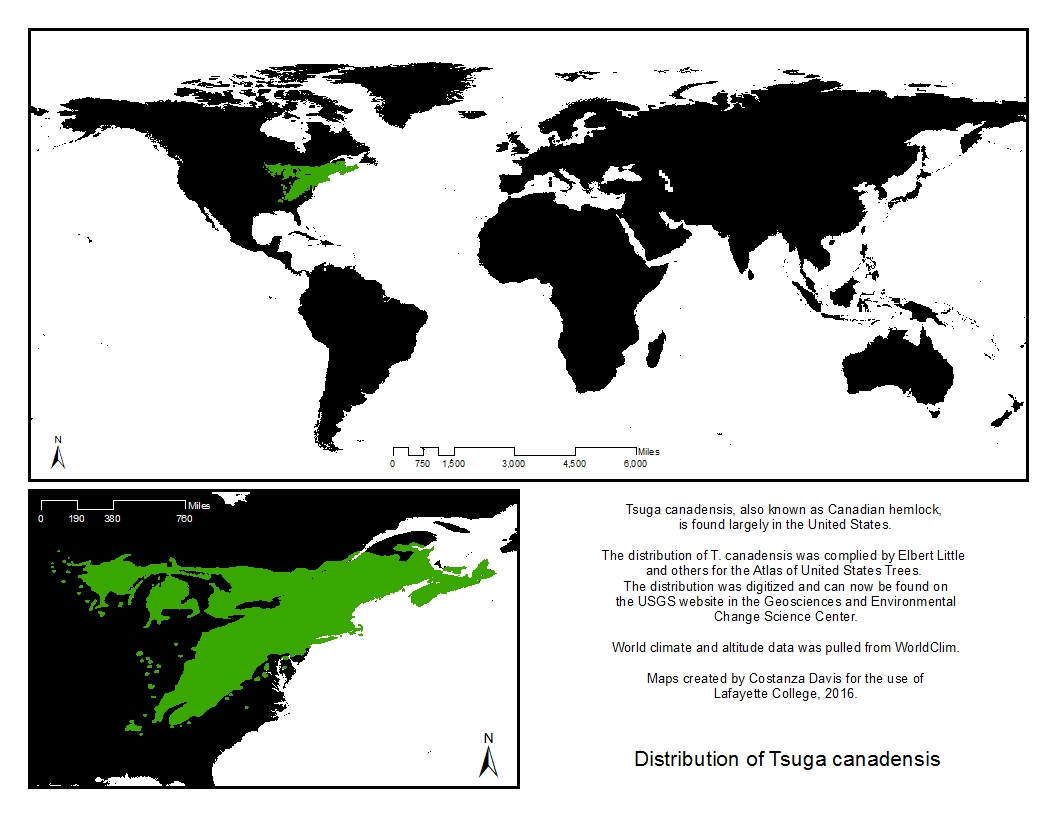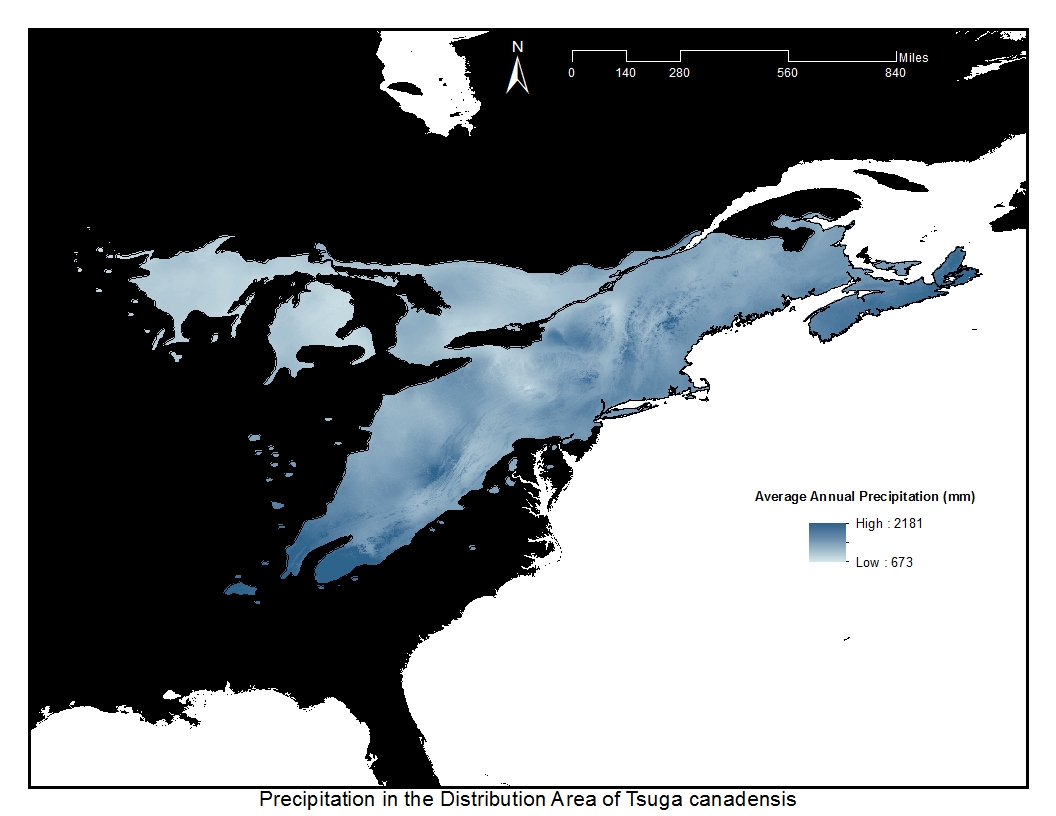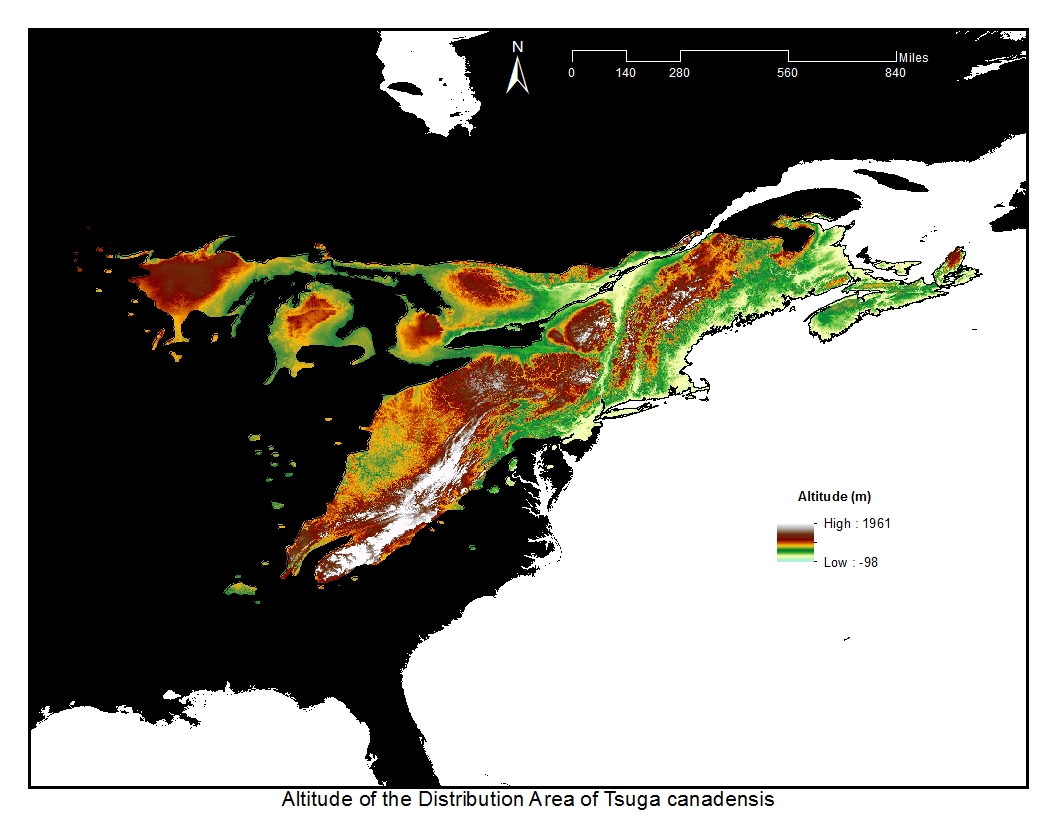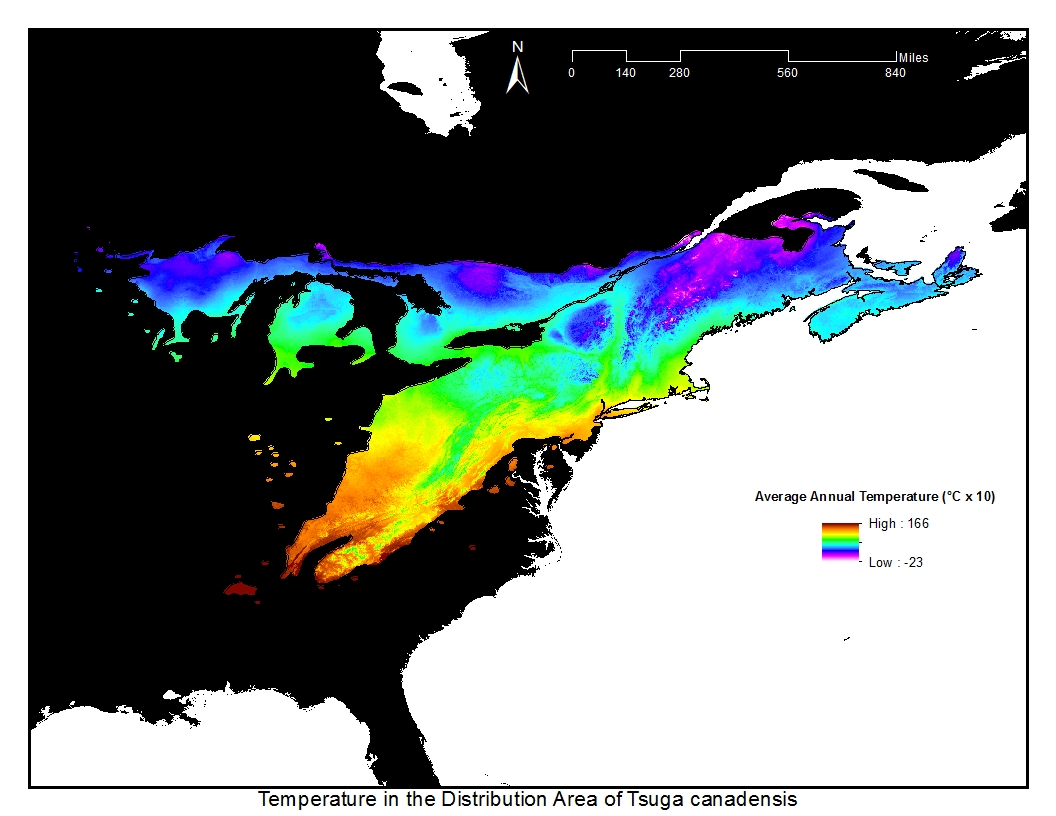Eastern hemlock, Tsuga canadensis, is also known as the Canada hemlock or hemlock spruce. It is similar to the Carolina hemlock, but has a much wider distribution, which entirely engulfs that of the Carolina hemlock. The distribution has also been reduced to the large amount of commercialization.
The eastern hemlock does best in cool, humid climates. Frost-free periods range between 80 and 200 days. The eastern hemlock appears to do best near the Atlantic coast and near the southern Appalachians.
The eastern hemlock prefers moist or very moist soils with good drainage. Often, the tree will grow on areas with lots of rocky glacial material distributed in sandy or silt loam. The eastern hemlock can tolerate high elevations, and if at high elevations are often found on the north or eastern slopes, or in valleys.
Eastern hemlocks thickets can form their own microclimate, due to the dense canopies, shade, retention of moisture, and low temperatures. This tends to reduce the understory vegetation of the area.
It can take 250 to 300 years to reach maturity, and can live 800 years or more, making it very long-lived. The tree, however, is slow growing, even if it has been known to reach 175 feet, with 76 inches in trunk diameter.
Male parts develop after about 15 years of age. The eastern hemlock is monoecious, with male and female clusters separate on the same tree, on the same branches. Of the Tsuga hemlocks, the eastern hemlock has the smallest cones. At full size, reached in late August or early September, the cones are usually 13 to 19 mm long.
Drying and irregular temperatures can severely damage the seeds, and even in ideal conditions the seedlings will grow very slowly. However, the eastern hemlock is incredibly tolerant, possibly the most tolerant of all tree species. An eastern hemlock can survive with even 5 % of full sunlight.
The eastern hemlock is a habitat for numerous creatures, offering shelter, bedding, and food for deer, among other animals.
The bark used to be used in the leather industry, to tan hides, but is now more often used in the paper industry.




